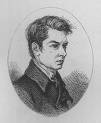
HAZLITT, WILLIAM (1778-1830). —Essayist and critic,born at Maidstone, was the son of a Unitarian minister. At his father's request he studied for the ministry at a Unitarian Coll. at Hackney. His interests, however, were much more philosophical and political than theological. The turning point in his intellectual development was his meeting with Coleridge in 1798. Soon after this he studied art with the view of becoming a painter, and devoted himself specially to portraiture, but though so good a judge as his friend, J. Northcote, R.A., believed he had the talent requisite for success, he could not satisfy himself, and gave up the idea, though always retaining his love of art. He then definitely turned to literature, and in 1805 published his first book, Essay on the Principles of Human Action, which was followed by various other philosophical and political essays. About 1812 he became parliamentary and dramatic reporter to the Morning Chronicle; in 1814 a contributor to the Edinburgh Review; and in 1817 he published a volume of literary sketches, The Round Table. In the last named year appeared his Characters of Shakespeare's Plays, which was severely attacked in the Quarterly Review and Blackwood's Magazine, to which his democratic views made him obnoxious. He defended himself in a cutting Letter to William Gifford, the editor of the former.
The best of Hazlitt's critical work—his three courses of Lectures, On the English Poets, On the English Comic Writers, and On the Dramatic Literature of the Age of Queen Elizabeth—appeared successively in 1818, 1819, and 1820. His next works were Table Talk, in which he attacked Shelley (1821-22), and The Spirit of the Age (1825), in which he criticised some of his contemporaries. He then commenced what he intended to be his chief literary undertaking, a life of Napoleon Bonaparte, in 4 vols. (1828-30). Though written with great literary ability, its views and sympathies were unpopular, and it failed in attaining success. His last work was a Life of Titian, in which he collaborated with Northcote.
Hazlitt is one of the most subtle and acute of English critics, though, when contemporaries came under review, he sometimes allowed himself to be unduly swayed by personal or political feeling, from which he had himself often suffered at the hands of others. His chief principle of criticism as avowed by himself was that "a genuine criticism should reflect the color, the light and shade, the soul and body of a work." In his private life he was not happy. His first marriage, entered into in 1807, ended in a divorce in 1822, and was followed by an amour with his landlady's daughter, which he celebrated in Liber Amoris, a work which exposed him to severe censure. A second marriage with a Mrs. Bridgewater ended by the lady leaving him shortly after. The fact is that Hazlitt was possessed of a peculiar temper, which led to his quarrelling with most of his friends. He was, however, a man of honest and sincere convictions. There is a collected edition of his works, the "Winterslow," by A.R. Waller and A. Glover, 12 vols., with introduction by W.E. Henley, etc.
Copyright © D. J. McAdam· All Rights Reserved